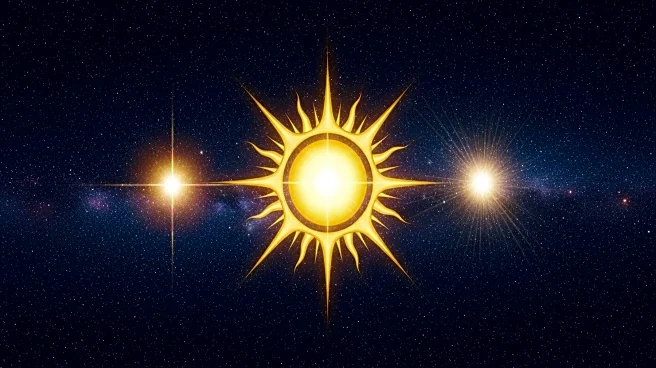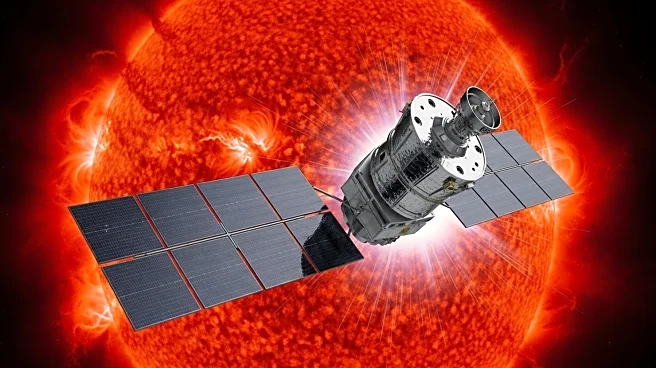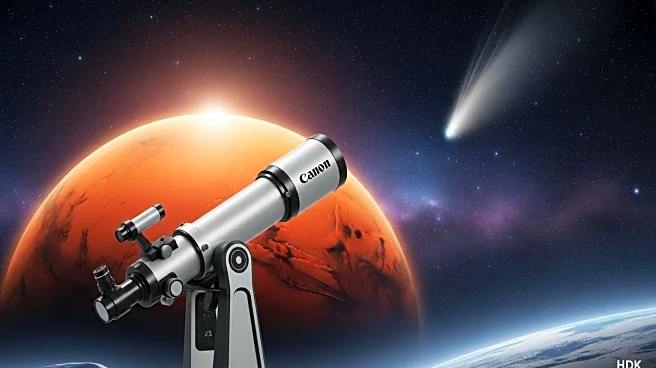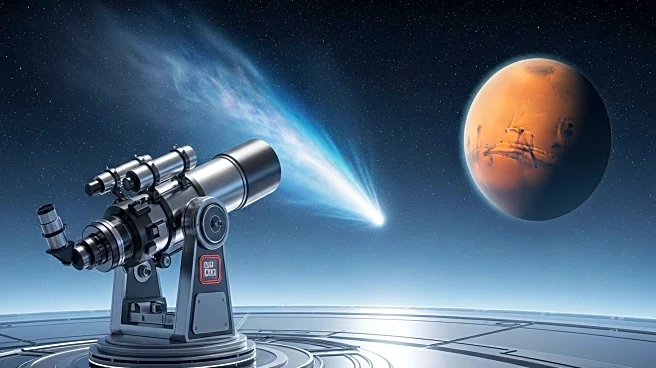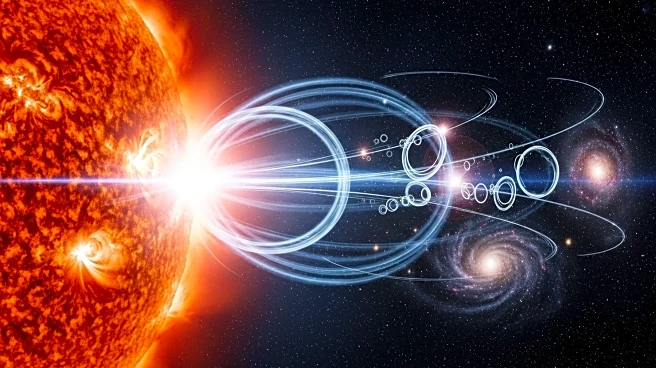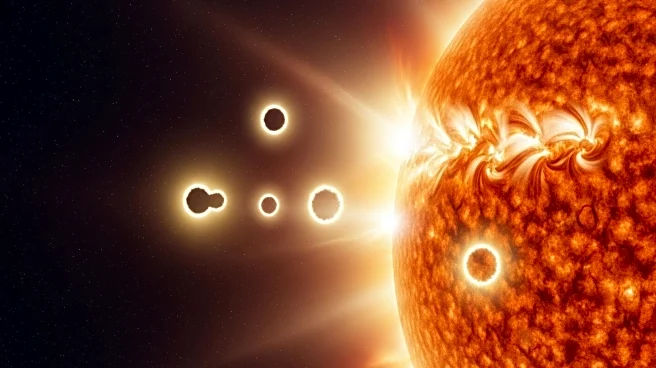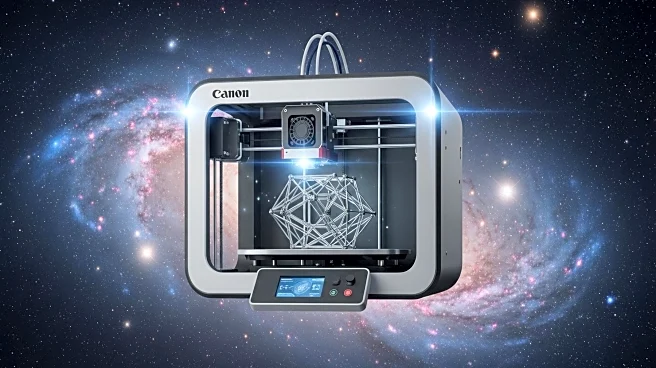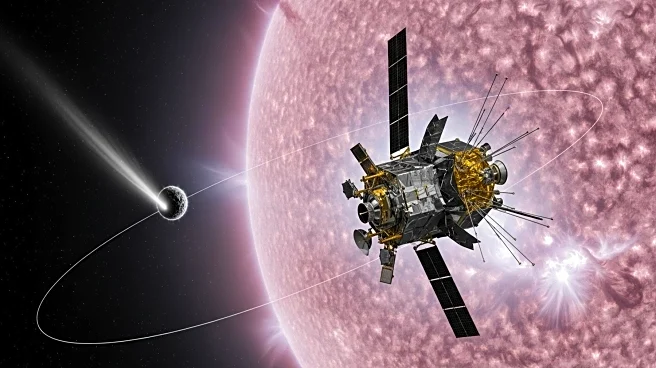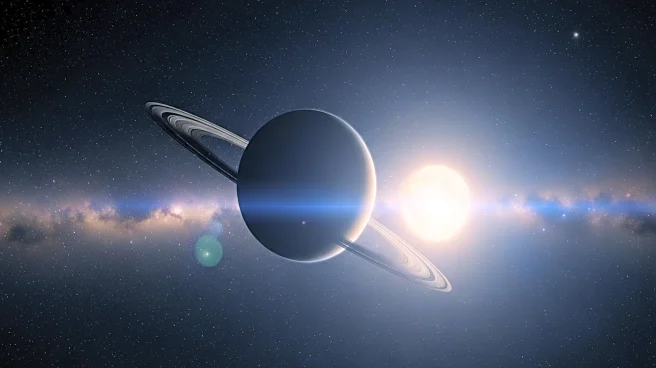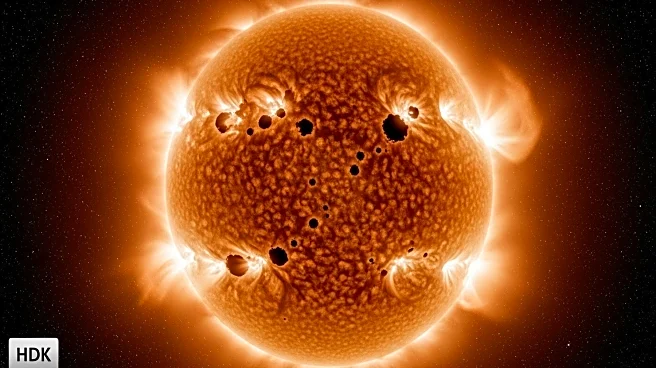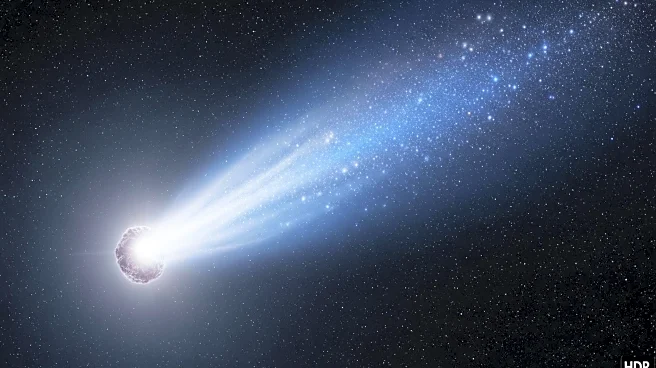What's Happening?
The European Space Agency's Solar Orbiter mission has identified two distinct types of Solar Energetic Electron (SEE) events originating from the Sun. These events are categorized as 'impulsive' and 'gradual,' linked to solar flares and coronal mass ejections (CMEs), respectively. The mission's findings, published in Astronomy & Astrophysics, provide new insights into how these energetic particles are accelerated and released into space. The study involved observing hundreds of events at varying distances from the Sun, allowing researchers to trace the particles back to their sources and understand their behavior as they travel through the solar system.
Why It's Important?
Understanding SEE events is crucial for space weather forecasting, which is vital for protecting spacecraft and astronauts from harmful solar radiation. The ability to distinguish between impulsive and gradual events helps in predicting the potential impact of solar activity on Earth's technology and infrastructure. This research enhances our knowledge of the Sun's particle acceleration mechanisms, contributing to the development of more accurate models for space weather prediction. The collaboration between ESA and NASA highlights the importance of international partnerships in advancing scientific research and technology.
What's Next?
ESA's upcoming Vigil mission, set to launch in 2031, will provide continuous observations of solar activity, offering early warnings of potentially hazardous events. Additionally, the Smile mission will study Earth's response to solar storms, furthering our understanding of the interaction between solar particles and Earth's magnetic field. These missions will build on the Solar Orbiter's findings, aiming to improve space weather forecasting and enhance the safety of space operations.
